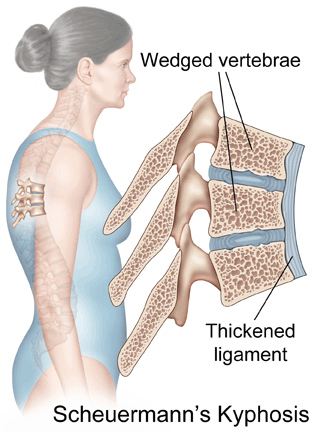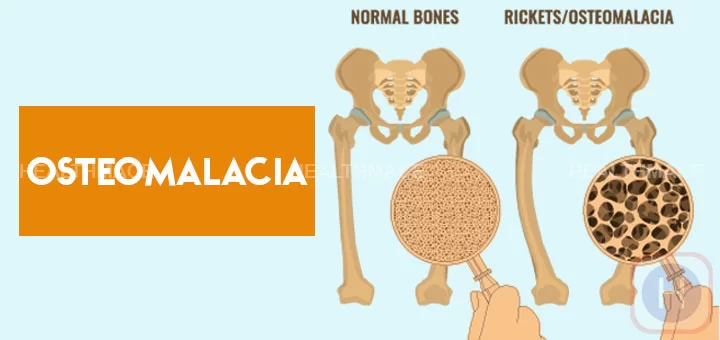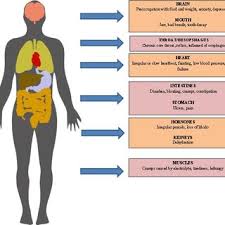FG Syndrome
Table of Contents
What is a FG Syndrome?
FG syndrome, also known as Opitz-Kaveggia syndrome, is a rare genetic disorder characterized by a wide range of physical, cognitive, and developmental abnormalities. The term “FG” stands for “FG syndrome,” and it refers to a group of related conditions that share similar clinical features.
The syndrome primarily affects males, with females often exhibiting milder symptoms due to the genetic inheritance pattern. FG syndrome is caused by mutations in one of the genes on the X chromosome, and its prevalence is estimated to be quite low.
Individuals with FG syndrome typically exhibit distinctive facial features, such as a prominent forehead, widely spaced eyes (hypertelorism), a broad nasal bridge, and a wide mouth with a prominent lower lip. These physical characteristics may aid in diagnosing the syndrome, but the condition’s complexity goes beyond its physical manifestations.
A genetic disorder known as FG syndrome mostly affects males and has a wide range of physical effects. “FG” stands for the initials of the last name of the first family to receive a disorder.
Behaviour and intelligence are impacted by FG syndrome. The illness is almost always accompanied by intellectual disability, which can range from mild to severe. Affected people typically have a short attention span, and are friendly, inquisitive, and hyperactive. Their socializing and daily life skills are stronger than those of people with other types of intellectual disabilities, although verbal communication and language abilities are typically worse.
A few recessive genes on the X chromosome generate the rare genetic disease known as FG syndrome (FGS), which results in physical abnormalities and developmental disabilities. The initials of the first patients diagnosed with the disease were used to create the name “FG syndrome. Its main clinical characteristics include intellectual impairment, hyperactivity, hypotonia (low muscular tone), and a distinctive facial appearance featuring macrocephaly (an abnormally large head), which were first described by American geneticists John M. Opitz and Elisabeth G. Kaveggia in 1974.
FG syndrome, once thought to be a rare, exclusively male, completely recessive X-linked disorder, is now more commonly recognized as a common disorder that may also affect carriers, with a wide range of manifestations that closely resemble those of the G/BBB (Opitz) syndrome. Congenital hypotonia with delayed motor and speech development, gastroesophageal reflux, constipation, mild spastic diplegia with delayed development of sensory integration, attention deficit disorder, self-absorption, and obsessions with mechanical toys and objects are typical manifestations. Agenesis of the corpus callosum, Chiari I malformation, congenital heart problems, intestinal atresias, and limb anomalies are examples of gross malformations.
Additional Names for This Illness
- Keller syndrome
- FGS1
- Opitz-Kaveggia syndrome (OKS)
Causes of FG Syndrome
The X-chromosome is thought to be the source of this syndrome’s alterations. According to an X paracentric inversion, FGS1 is roughly mapped to Xq13, FGS2 to Xq11 or Xq28, and FGS3 to Xp22.3. Since midin, a byproduct of the X-linked G/BBB syndrome gene, is known to interact with that of the gene MIDIA1 at Xq13, a potential gene for the FG syndrome, clinical overlap with the G/BBB syndromes supports not only a pathogenetic but maybe a causal linkage. Numerous/most carriers exhibit more or less subdued FG syndrome symptoms, such as a high forehead, cowlicks, widow’s peak, broad thumbs, hallucinations, headaches, depression, and anxiety. The frequent occurrence of FG symptoms in all of the siblings in segregating cases as well as in some of the dads raises the possibility of a genetic defect (such as meiotic drive or segregation distortion) or gene-gene interaction (such as FG/G/BBB).
Five areas of the X chromosome have alterations that have been associated to FG syndrome in affected families, according to research. The condition appears to be most frequently caused by mutations in the MED12 gene, which is present in one of three areas. Researchers are looking into additional X chromosomal regions for genes that may be connected to FG syndrome.
An instruction set for a protein that helps control gene activity is provided by the MED12 gene. In particular, the MED12 protein is a component of a sizable complex (a collection of proteins that cooperate) that regulates gene expression. It is believed that the MED12 protein is crucial for development both before and after birth.
FG syndrome is caused by at least two mutations in the MED12 gene, according to research. It is not known how the mutations cause the intellectual disability, behavioral problems, and physical characteristics connected with this disorder, despite the fact that they disrupt the structure of the MED12 protein.
Genetics:
The MED12 gene is where the majority of FG syndrome-causing mutations are located. However, the genes for FMR1, FLNA, UPF3B, CASK, MECP2, and ATRX have also been shown to have mutations. A variety of FG syndromes with related traits are caused by mutations in these several genes. The MED12 gene harbors the FGS8 type mutation, which is the most prevalent of the types.
MED12 gene
The mediator complex subunit 12 protein is encoded by the MED12 gene. About 25 distinct proteins make up the mediator complex, all of which contribute to the control of gene activity. This mediator complex bridges the relationship between RNA polymerase II and proteins that specifically control the expression of particular genes, such as transcription factors, repressor proteins, activator proteins, etc. The creation of new proteins may be severely impacted by changes to this complex and the related proteins. The MED12 gene is also thought to have a significant role in the signal transduction pathway of cells and in neuronal development. This explains the intellectual retardation that FG syndrome sufferers experience.
Symptoms of FG Syndrome
The first clinical features include:
- Prenatal oligohydramnios,
- Ultrasonographic ventricular dilatation,
- Reduced fetal movements
- Fetal distress with frequent delivery by caesarian section
- Neonatal respiratory distress syndrome,
- Thrombocytopenia,
- Transient jaundice,
- Gastroesophageal reflux, which at times, requires fundoplication,
- Chronic constipation has some sort of anal defect, including stenosis or imperforation.
- Frequent middle ear infections,
- Delayed acquisition of speech and motor skills.
- Physical disability is usually mild
- Hyperactive behaviour
- Often with a slow personality
- Macrocephaly
- Characteristic facial appearance due to hypotonia
- Giving a droopy, “open-mouthed” expression
- A thin upper lip, a full or pouting upper lip
- Minor to Major loss of the corpus callosum.
The majority of severe behavioral issues in childhood are caused by delayed sensory integration, which causes overreactions to sensory stimulation such as touch, sound, light, crowds, emotional pressure, temperature changes, and along with an oral aversion to food textures (resulting in a propensity to “bolt” food and danger of aspiration and asphyxiation). Overreactions take the form of extreme temper tantrums and withdrawal. a propensity for self-introspection and a frequent fascination with mechanical toys and items. Frequently diagnosed as “autistic” or as having Asperger syndrome or “pervasive developmental disorder”. Since it is uncommon, most affected boys and girls perform within the normal range. Seizures are rare, and spastic diplegia is more common.
The majority of severe behavioral issues in childhood are caused by delayed sensory integration, which causes an overreaction to sensory stimulation such as touch, sound, light, crowds, emotional pressure, changes in temperature and oral aversion to food textures (with a propensity to “bolt” food and a danger of aspiration and asphyxiation) are other factors that can affect health. Overreactions take the form of extreme tantrums and withdrawal. tendency to be self-absorbed, and frequent fascination with mechanical toys and gadgets.
Diagnosis:
For FG syndrome, there are no defined clinical diagnostic standards. The following clinical characteristics of an individual may be symptomatic of additional evaluation in the eyes of a healthcare professional:
- Delays in neurodevelopment
- A family tree that supports X-linked inheritance
- Distinctive facial characteristics
- Relative or absolute macrocephaly
- Dolichocephaly
- Hairstyle: down swept front
- Minimal forehead
- Palpebral cracks that slope downward
- Really close-up
- Missing upper eyelid creases
- Ears that are small and simple (10th percentile)
- Mouth ajar
- Long, broad face
- Hallucinations and wide thumbs
- Congenital abnormality (skeletal, heart, corpus callosum, and anal)
- Constipation, hypotonia, or issues with feeding
- Characteristic actions (friendly and willing to accommodate)
Diagnostic procedures
- Routine MRI
- EEG
- Echocardiography
- Electromyography
- Pediatric, neurological, gastroenterological, cardiologic, and child psychosocial methods.
Diagnosis Criteria:
Boys and girls who have FG syndrome may have a syndrome of relatively short stature with a disproportionately large head, a combination of minor anomalies such as a high forehead, cowlicks, abnormal hair whorls, apparent hypertelorism, relatively thin upper lip vermilion with prominence of the lower lip, hypotonic mouth breathing changes, minor ear anomalies, the appearance of rather large corneal, broad thumbs, and other characteristics. Agenesis of the corpus callosum (partial), Chiari I malformation, vertebral malformation, intestinal/anal atresia, poly-, oligo-, and syndactyly, genitourinary abnormalities, cryptorchidism, hernias, and congenital heart problems are among the anomalies.
Treatment
An accurate diagnosis is essential. Reflux, constipation, seizures, hyperactivity, and attention deficit disorders are typically treated symptomatically. It is necessary to provide psychological and pediatric neurological care; orthopaedic care is a rarity when it comes to the effects of lower limb spasticity.
A helmet for plagiocephaly, neurosurgical treatment for symptomatic Chiari malformation with syrinx and craniosynostosis, and cardiac assessment (most patent ductus, atrial septal, and ventricular septal defects resolve spontaneously) are required. Patients may need to use assisted communication devices or learn sign language in order to be placed in the appropriate educational environment. It is recommended to introduce instructional computers early.
Summary
Research into FG syndrome continues to uncover more about its genetic basis, underlying mechanisms, and potential treatments. As of now, advances in genetics and medical research were contributing to a deeper understanding of this complex disorder. It’s important to consult current medical sources for the latest information on FG syndrome.
FAQs:
Frequency. Several hundred cases of FG syndrome have been recorded globally, although its prevalence is unknown. Due to the fact that many of the FG syndrome’s signs and symptoms are also present in other conditions, researchers believe that the condition may be overdiagnosed.
Behaviour and intelligence are impacted by FG syndrome. The illness is almost always accompanied by intellectual disability, which can range from mild to severe. Affected people typically have a short attention span, and are friendly, inquisitive, and hyperactive.
FG condition. various names. FGS1: Opitz-Kaveggia syndrome. Specialty. genetics in medicine.
According to a synopsis provided by Piluso et al. (2003), FG syndrome-4 (FGS4) is an X-linked recessive intellectual developmental condition characterized by congenital hypotonia, constipation, behavioral abnormalities, and dysmorphic characteristics.
There is proof that the Opitz-Kaveggia syndrome, commonly known as FG syndrome-1 (FGS1), is brought on by a mutation in the MED12 gene (300188) on chromosome Xq13, hence the usage of the number sign (#) with this entry.







